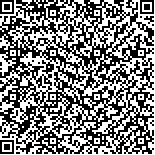| 本文已被:浏览 372次 下载 476次 |

码上扫一扫! |
|
|
| 氨氮急性胁迫对许氏平鲉血液生化指标影响 |
|
高云涛1,2, 高云红1, 王嘉伟1,2, 李明月1, 曲江波3, 贾玉东1, 孟振1
|
|
1.中国水产科学研究院黄海水产研究所, 青岛市海水鱼类种子工程与生物技术重点实验室, 山东 青岛 266071;2.上海海洋大学水产与生命学院, 上海 201306;3.烟台开发区天源水产有限公司, 山东 烟台 264006
|
|
| 摘要: |
| 采用96 h半静态毒性实验,研究了许氏平鲉幼鱼的氨氮耐受性和氨氮胁迫下血液生化指标的变化规律。结果表明,在水温(18.6±0.5)℃,pH 7.85,盐度30和溶氧(8.6±0.5) mg/L的条件下,平均体质量(63.60±10.14) g、平均全长(15.90±3.29) cm的许氏平鲉幼鱼总氨(TAN)和非离子氨(NH3-N)96 h的半致死浓度(LC50)分别为18.01 mg/L和0.27 mg/L,安全浓度(SC)分别为1.80 mg/L和0.03 mg/L。设定TAN为0、3.5、10和20 mg/L 4个浓度梯度,对同等规格苗种进行96 h急性胁迫实验,血液生化指标的双因素方差分析表明:氨氮浓度、暴露时间及两者交互作用对血浆血糖(GLU)、血氨(PA)、还原型谷胱甘肽(GSH)、碱性磷酸酶(AKP)和谷草转氨酶(AST)含量/活性存在显著影响,两者交互作用对血浆皮质醇(Cor)和谷丙转氨酶(ALT)含量/活性无显著影响,暴露时间对血浆胆固醇(TCH)无显著影响;其中,血浆GLU、GSH、AKP随处理时间延长呈先升后降趋势,随氨氮浓度升高响应时间提前;PA浓度与环境TAN浓度正相关。相关研究结果可为许氏平鲉幼鱼的养殖管理和苗种运输提供指导,血浆GLU、GSH、PA和AKP可作为许氏平鲉氨氮胁迫的敏感指标。 |
| 关键词: 许氏平鲉 氨氮急性胁迫 血液生理指标 |
| DOI:10.11759/hykx20210306001 |
| 分类号:S949 |
| 基金项目:山东省重点研发计划项目(2018YFJH0703,2021SFGC0701);中国水产科学研究院中央级公益性科研院所基本科研业务费专项资金(2019ZD1103) |
|
| Effect of acute ammonia stress on the plasma biochemicalindexes of Sebastes schlegelii |
|
GAO Yun-tao1,2, GAO Yun-hong1, WANG Jia-wei1,2, LI Ming-yue1, QU Jiang-bo3, JIA Yu-dong1, MENG Zhen1
|
|
1.Marine Fish Breeding and Biotechnology Laboratory, Yellow Sea Fisheries Research Institute, Chinese Academy of Fishery Sciences, Qingdao 266071, China;2.College of Fisheries and Life Science, Shanghai Ocean University, Shanghai 201306, China;3.Tianyuan Aquaculture Co., Ltd of Yantai Economic Development Zone, Yantai 264006, China
|
| Abstract: |
| This study aimed to investigate the tolerance of Sebastes schlegelii and the corresponding changes in the plasma biochemical indexes under acute ammonia stress. The juveniles of S. schlegelii (averaged body weight 63.60±10.14 g) were exposed to different concentrations of ammonia in a 96 h half-static toxicity test. At a water temperature of 18.6±0.5℃, pH 7.85, salinity 30, and dissolved oxygen concentration of 8.6±0.5 mg/L, the 96 h semilethal and safe concentrations of total ammonia (TAN) and nonionic ammonia were 18.01 and 0.27 mg/L and 1.80 and 0.03 mg/L, respectively. The TAN was set to four concentrations of 0, 3.5, 10, and 20 mg/L, and the effect of acute ammonia stress on the plasma biochemical indexes was studied. Two-way analysis of variance showed that the content of plasma glucose (GLU), ammonia (PA) and reduced glutathione (GSH), and the activity of alkaline phosphatase (AKP) and aspartate aminotransferase were significantly affected by ammonia concentration, processing time, and the combination of these parameters (P<0.05). Plasma cortisol content and alanine aminotransferase activity were unaffected by the combination of different ammonia concentrations and the processing time. Plasma cholesterol was unaffected by the processing time. Plasma levels of GLU and GSH, along with AKP activity, initially increased and subsequently decreased with increasing treatment time, and the effect time advanced with increasing ammonia concentration. The PA concentration positively correlated with that of TAN. These results show that the content of GLU, GSH, PA, and AKP activity can be used as sensitive indicators of acute stress in S. schlegelii. Therefore, this study provides guidance for breeding management and larvae transportation of S. schlegelii. |
| Key words: Sebastes schlegelii acute ammonia stress plasma biochemical indexes |
